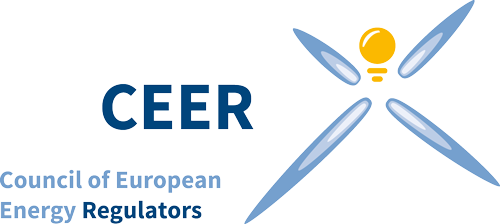| Background
Europe’s (2009) 3rd Package of energy liberalisation laws provide for EU -wide network codes in 12 areas in electricity (and the same in gas). These EU-wide Network Codes (which may become legally binding) will be drafted by the European TSO bodies (ENTSOs) in line with the framework guidelines set out by the Agency for the Cooperation of Energy Regulation (ACER). These EU-wide network codes are critical for an integrated EU energy market.
Working “as if” it were ACER (i.e. respecting the deadlines and procedures set out in the 3rd Package and following the step-by-step process which the regulators had developed), ERGEG “pilot tested” the framework guideline process during 2010 working on a total of 6 different framework guidelines in parallel in the following areas:
• electricity grid connection;
• electricity capacity allocation and congestion management;
• system operation;
• gas capacity allocation;
• gas balancing rules; and
• gas harmonised transmission tariff structures.
ERGEG’s framework guideline on electricity capacity allocation and congestion management
Following extensive consultation with stakeholders, on 9 February 2011, ERGEG formally submitted its framework guidelines on electricity capacity allocation and congestion management (CACM FG) to the European Commission.
The CACM FG addresses a central issue in completing the internal market in electricity, namely how (scarce) interconnection capacity is allocated and how bottlenecks in the networks are managed. The integration of national markets by means of efficient and effective use of interconnection capacity is a key step in the achievement of an internal electricity market in Europe.
The draft framework guideline addresses three timeframes of capacity allocation: forward market, day-ahead market and intraday market. Additionally, it addresses capacity calculation which is crucial to the issue of capacity allocation and congestion management.
The CACM FG builds on the target model for electricity congestion management in Europe developed jointly by stakeholders (PCG) and elaborated through the Ad Hoc Advisory Group of stakeholders, both groups chaired by ERGEG. AHAG’s implementation groups provided input in areas of day-ahead, governance, intraday and capacity allocation. There was extensive consultation and discussion with key market participants in drafting the CACM FG. In Autumn 2010, ERGEG held a workshop and launched for public consultation its Initial Impact Assessment (IIA) and its draft framework guideline on CACM.
What problem does the Electricity Capacity Allocation and Congestion Management Framework Guideline (CACM FG) seek to resolve?
• Inefficient and sub-optimal use of transmission network capacity between and within the control areas
• Current CACM methods have not enabled market liquidity and formation of reliable prices in day-ahead & forward electricity markets
• Strong adverse incentives for the TSOs to underestimate commercial available capacity have been created
• CACM methods do not sufficiently account for large-scale variable generation (e.g. taking into account loop flows)
Who is most seriously affected by these problems?
Customers. Reduced efficiency directly reduces customers’ benefits.
Without action, these CACM problems will increase in the future as market integration evolves and the interdependencies between the different control areas grow.
What is the objective of the electricity CACM framework guideline?
The overall objective is an optimal use of power generation plants and transmission across Europe. Sub-objectives:
• Optimal use of transmission capacity;
• Reliable prices and liquidity in the day-ahead market
• Efficient forward electricity market
• Efficient intraday market
When ACER takes over the framework guideline process – what happens next?
Under the 3rd Package, it is ACER who must submit the framework guidelines to the European Commission – the Commission will examine them to see if they meet the criteria of the Gas/Electricity Regulation, and it is the Commission who invites the ENTSOS to draft (within 12 months) the corresponding network code which must comply with ACER’s framework guideline. Indeed, ERGEG (the European Commission’s formal advisory group on internal energy market issues) will die shortly after ACER (which has the status of being an EU Agency) assumes its full responsibilities and powers in March 2011.
Already in December 2009, ERGEG finalised and submitted to the Commission two (pilot) framework guidelines – one on electricity grid connection, and the other on gas capacity allocation (see Feature Article of the December 2010/January 2011 newsletter). Satisfied that ERGEG’s work meets the criteria of the Gas Regulation, the Commission has now invited ACER to formally submit (by 04 July 2011) the framework guideline on gas capacity allocation, and invited ENTSOG to submit to ACER (by 27 January 2012) a network code which must be in line with the framework guideline. As required under the 3rd Package, ACER will run a (2-month) public consultation on the gas capacity framework guideline (eventhough it has already been subject to an ERGEG public consultation). ACER’s first public workshop will be on the gas capacity allocation framework guideline. The workshop will take place on 7 March in Ljubljana, Slovenia. | 